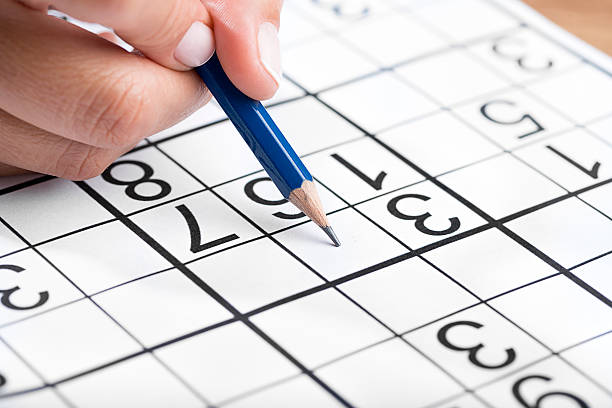This year, a sudoku board has appeared on the upstairs whiteboard in North Hall. For anyone wanting to participate, here are some tips:
- Every row, column, and square is required to have all numbers 1 through 9, so if it is only missing two or three, figure out what those are and see if you can eliminate some of their positions.
- Every cell has a number in it, so if only one number is an option, put it in that space.
- If you know that a number for a certain row, column, or square goes in one of two or three cells, use their known position to your advantage when working the surrounding area.
- There are exactly nine of each number on the board. If there are already nine 4s, you don’t have to worry about any more 4s.
- Additionally on the school’s sudoku we have color coded the numbers to easily keep track of all of the numbers in each set of squares. If there are no more red 8s, that means that the bottom three squares all have an 8 in them.
Below is a step by step guide to solving the following sudoku, along with logical explanations.


You know a 1 goes here because the top right square is missing a 1 and we cannot place it in any other place because of the other two 1s.

Similarly, a 5 has to go here because it can’t be placed in the top row.

The top right square is now only missing three numbers 7, 2 and 9. If we map out all the places we can place these numbers, we find that 7 is the only one that can be placed above the 6. While we can’t determine the placement of the 2 and 9, we do know that they are placed in those two spots.
Let’s put the seven above the six and come back to the 9 and 2 later.

Looking at the first row, we are missing a 3, 4, 6, and 8. We know that the two and nine are in the last two spots. Using our current information, we can’t put a 3 in the top left box or on the middle right cell. The top row’s 3 can only go in the top left corner of the top middle.

Since there is only one spot to put a 2 in the top left box, we will put it here.

The top middle 5 goes in this spot. It cannot be placed in the first or second row, and there is already a 5 in the 5th column. Using this information we can figure out the location of the middle box’s 5.

Jumping to the bottom row, we realize the 2 and 7 have to go in the second row, and place them in these two spots.
Looking at the 6th column we see that we are still missing a 1, 6, 8, and 9. Out of the remaining squares, there is only one place to put the 1. Then, there’s only one place in the column for the nine. We have also almost completed the 2nd row. Put the 7 in the middle and we now have enough information to fill out the top left and middle boxes.

Now that you have some helpful tips and strategies, see if you can figure the rest out for yourself. To point you in the right direction, where could you put a two in the bottom left box? What numbers can go in the second column? The last tip is to not worry too much about any one square or row, figure out what you can, and if you haven’t filled it out yet, work on a different part and come back when you have more information.

